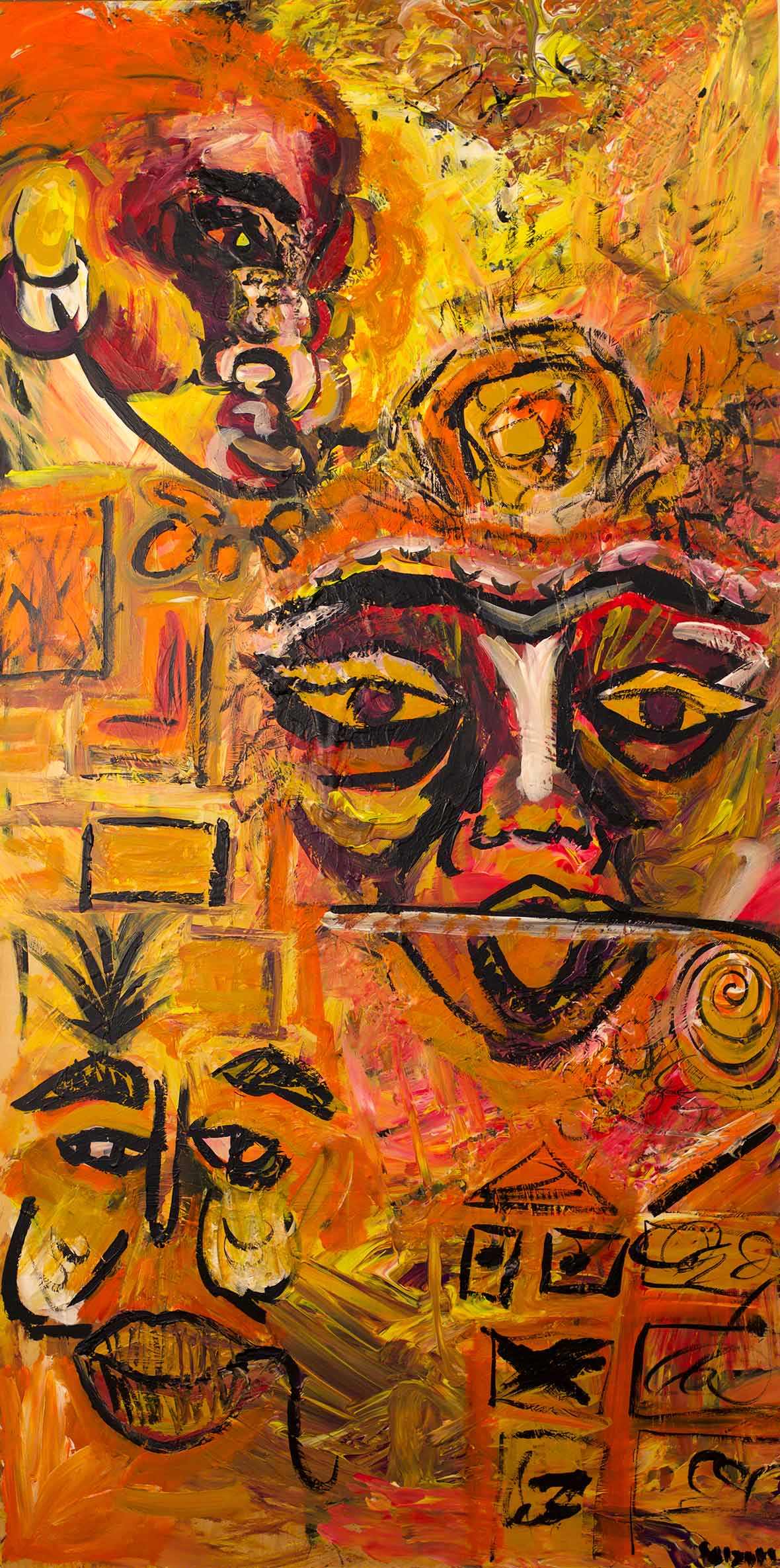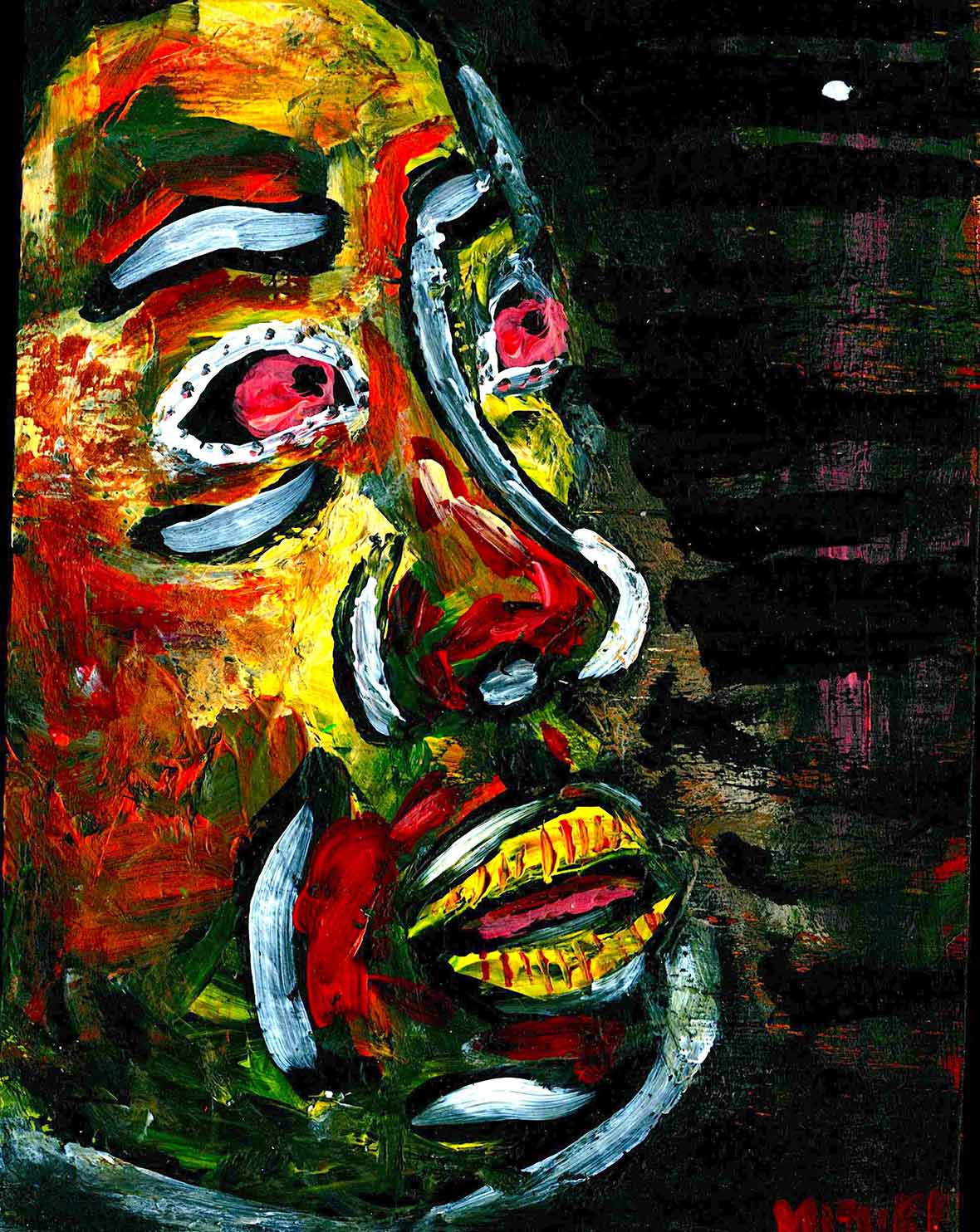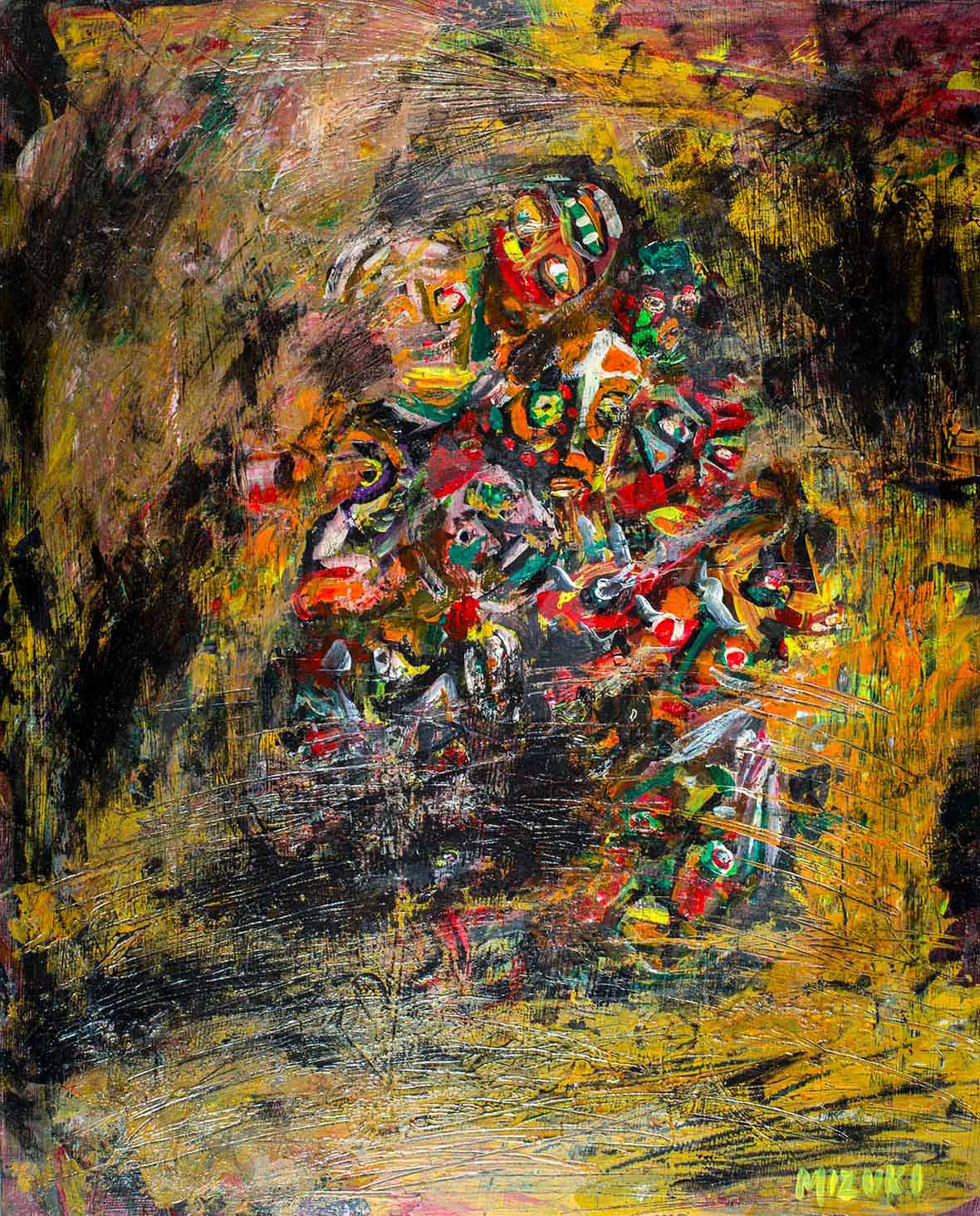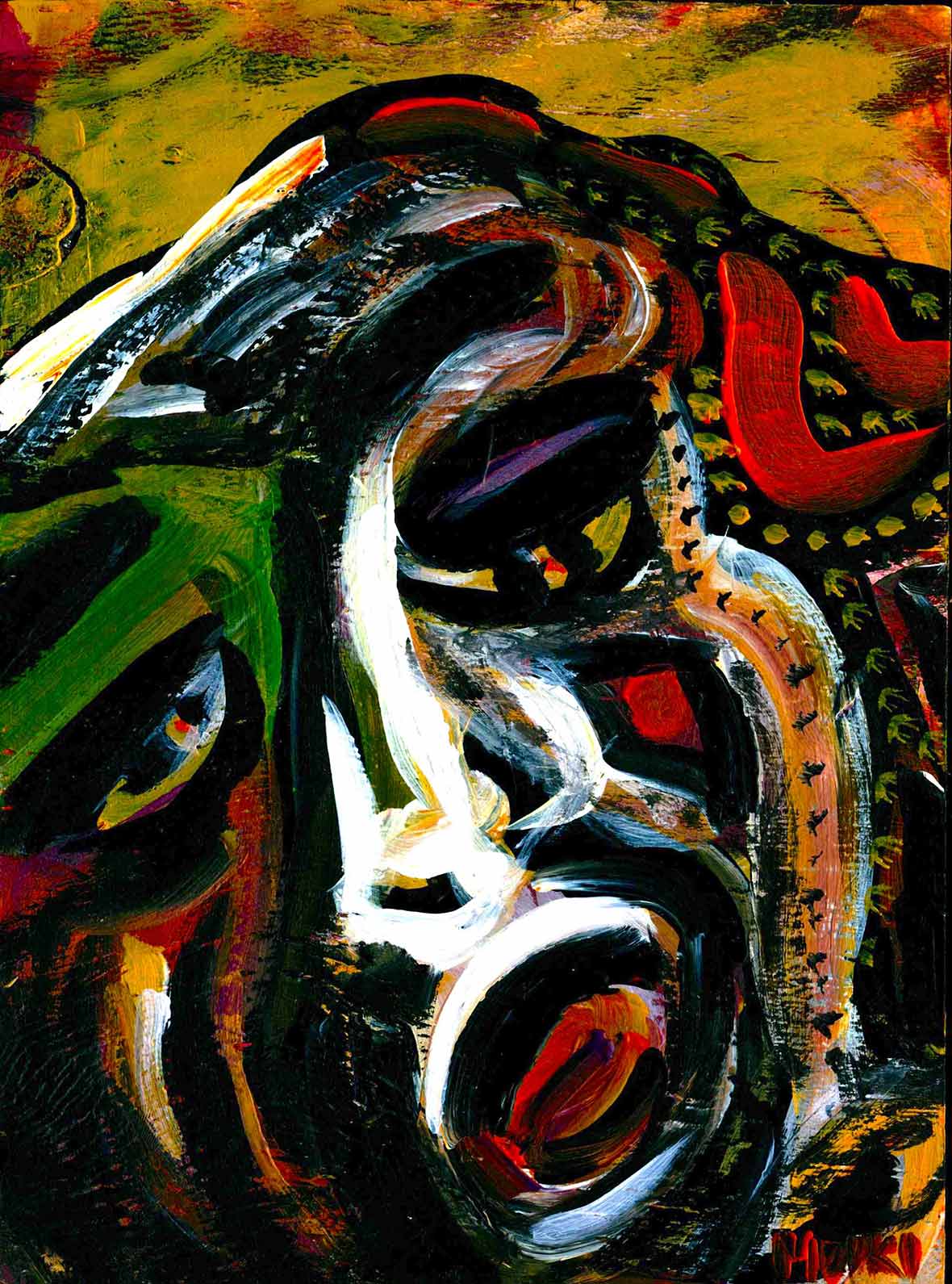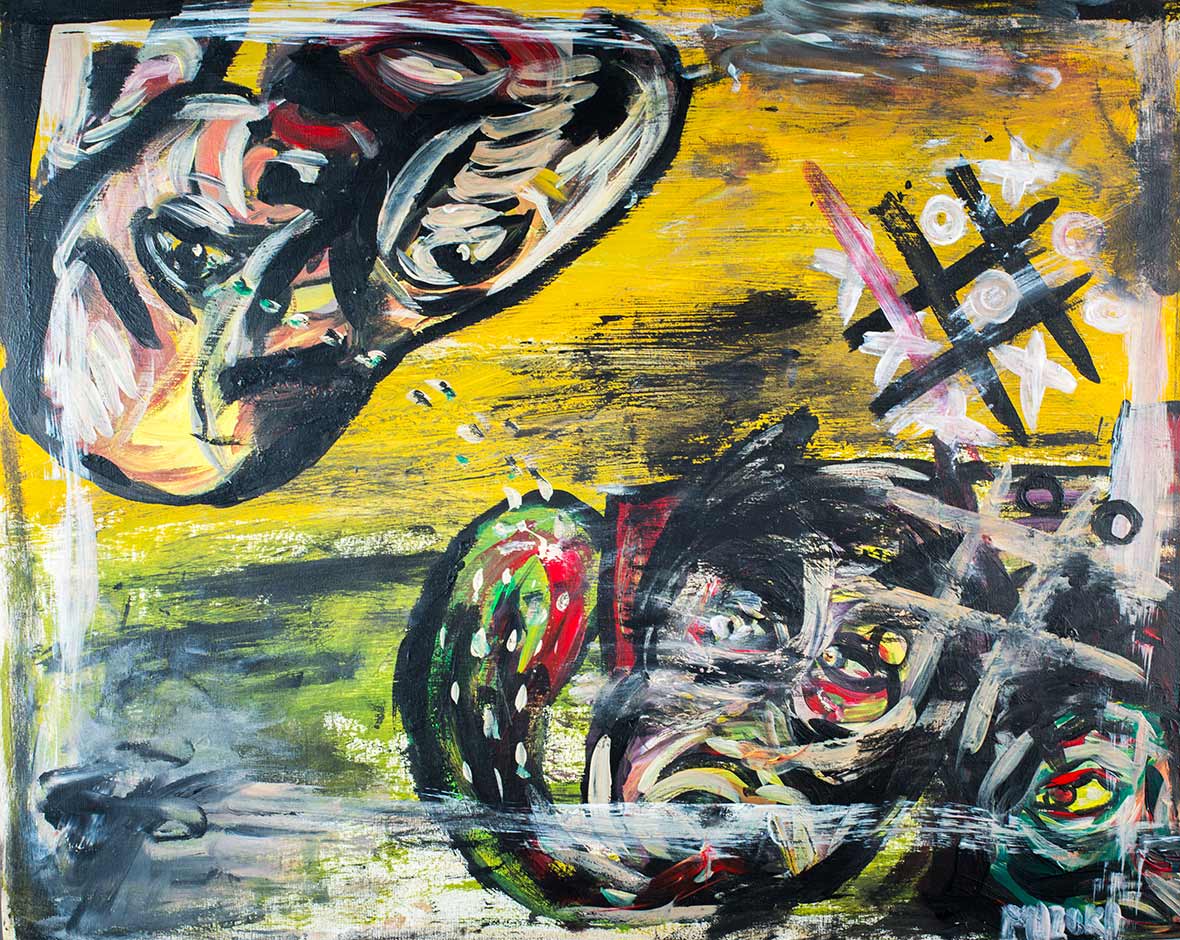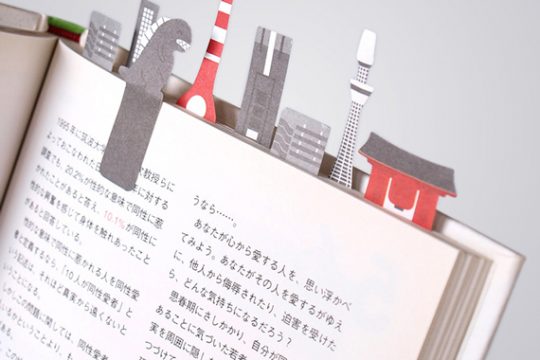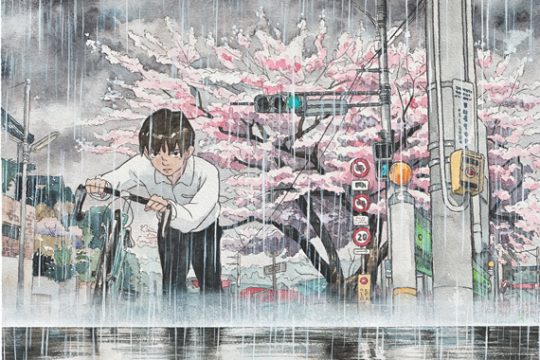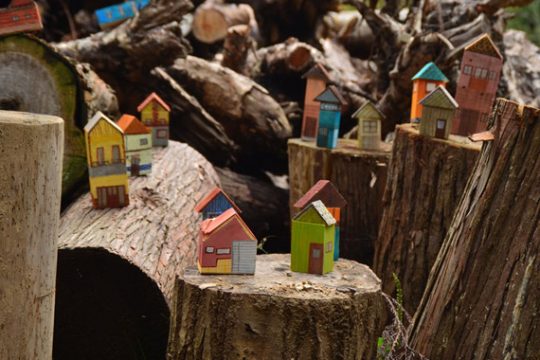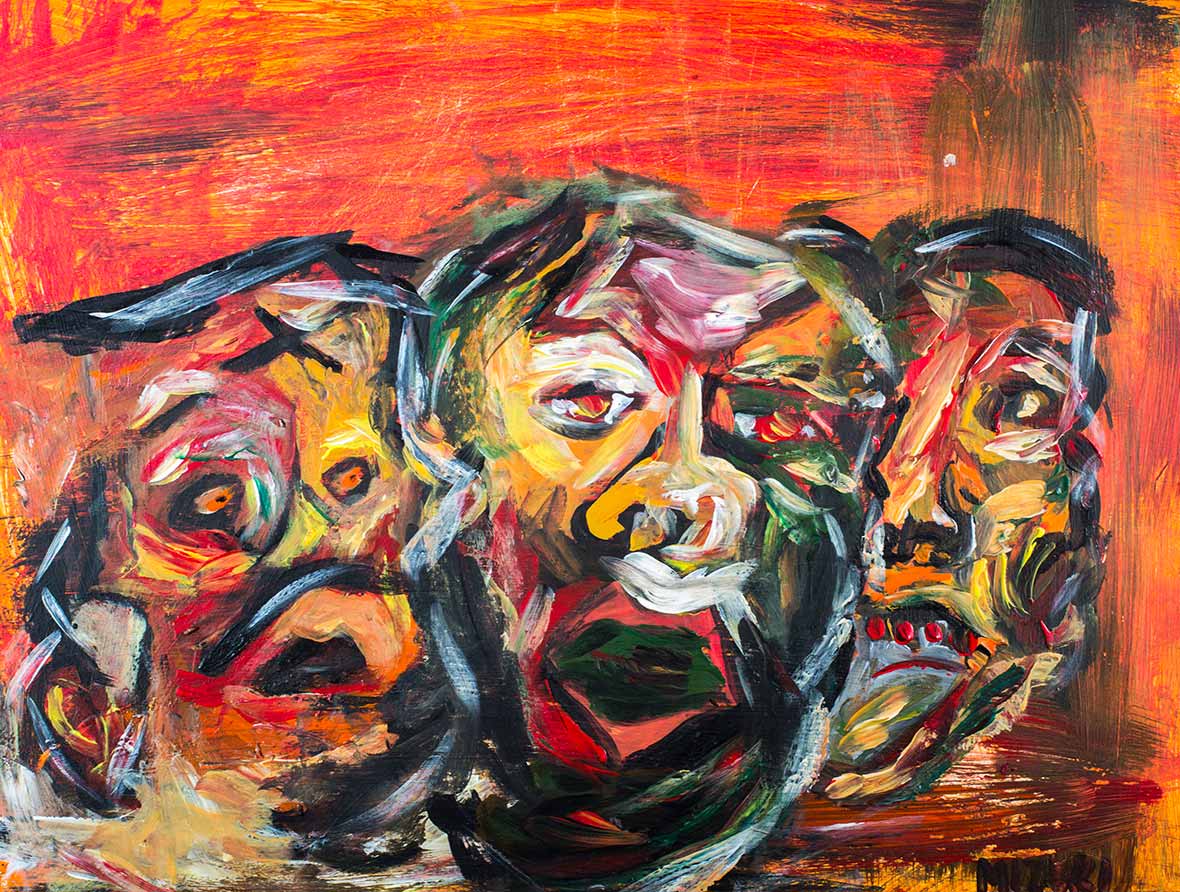
Mizuki Nishiyama is a Japanese multimedia artist, painter, and poet based in New York City. Currently a student at the Parsons School of Design, Nishiyama creates abstract expressionist works that examine personal experiences, ideas of the extreme, and the concept of human fragility. Nishiyama tells Neocha more about her artwork below.
Mizuki Nishiyama是来自日本的多媒体艺术家、画家和诗人,现居纽约,就读于帕森设计学院(Parsons School of Design)。Nishiyama以抽象表现主义的作品,探讨自己的人生经历,极端的想法和人类脆弱性的概念。最近,Nishiyama和Neocha分享了她对艺术、文化和创意的一些想法。
Neocha: What first drew you to pursue art?
Nishiyama: My grandma, granduncle, and mother are all painters. Each of them work in different mediums – my grandma uses tennen iwa enogu (powdered minerals) for Nihonga (traditional Japanese art), my granduncle paints with watercolor, and my mother paints with oil. As my family has an artistic background, I presume I’ve been influenced by them. Nevertheless, many of my own personal developments have led me to explore different methods to recreate or make a statement, whether it be through music, dance, or writing. Over time, I’ve realized that painting allows me to create the most accurate representation of what I intend to visualize.
Neocha: 你一开始为什么会对艺术感兴趣?
Nishiyama: 我的祖母、伯祖父和母亲都是画家。他们各自用着不同的媒介来创作。我的祖母用Tennen Iwa Enogu(粉状矿物质)来画日本画(Nihonga,指日本的民族传统绘画),我的伯祖父画水彩画,而我母亲则是画油画。由于我家的艺术背景,我从小就已经受到他们的影响。尽管如此,我个人的很多经历也在促使我去寻求不同的方法来创作或表达,可以是音乐,也可以是舞蹈或写作。慢慢地,我意识到,绘画能最准确表达出我想要可视化的内容。
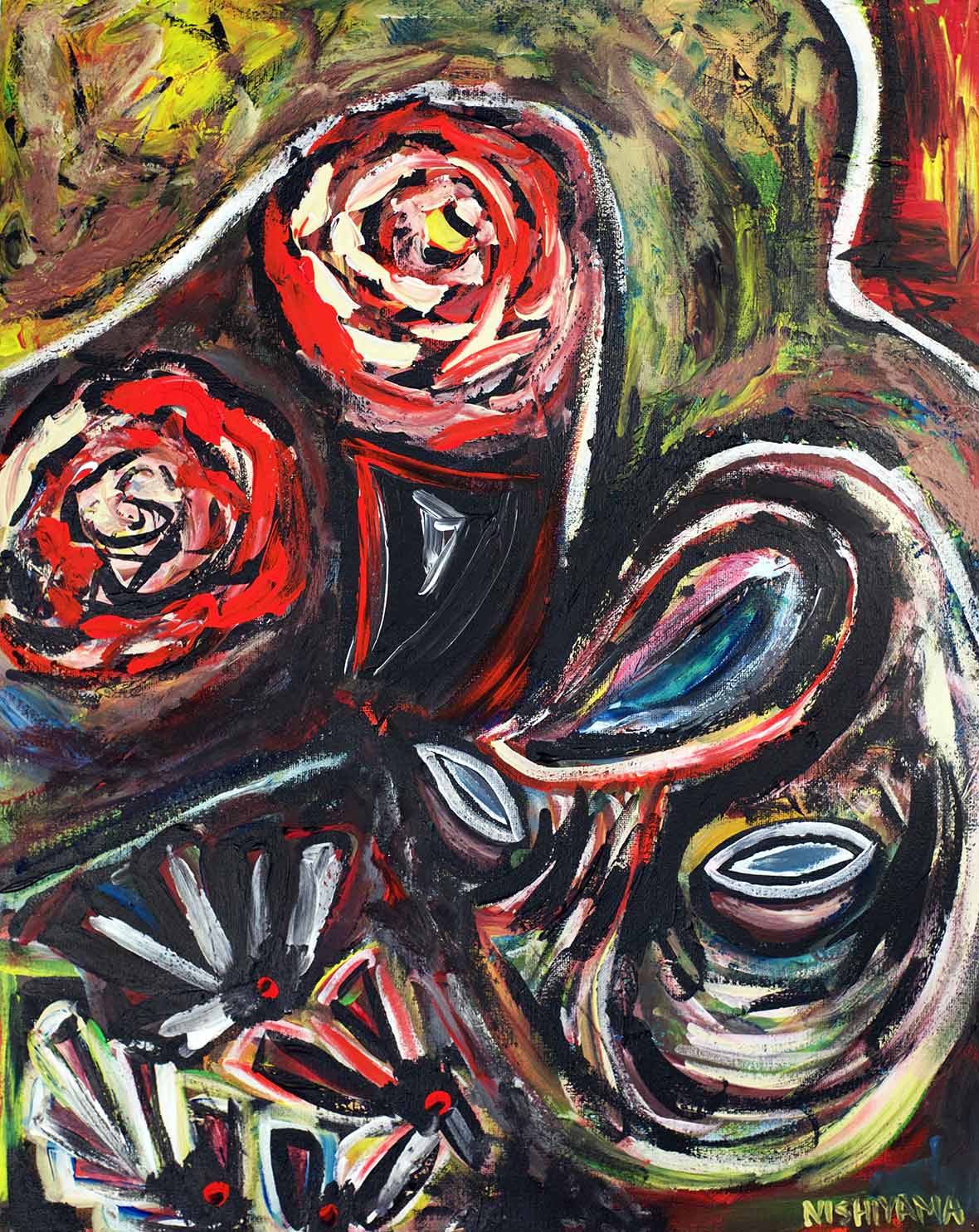
Neocha: Aside from familial influences, how does Japan and its culture influence your artistic process?
Nishiyama: I was fortunate to have been raised in a culturally diverse environment. My father is from Japan and my mother is from Hong Kong, but they spent a big portion of their lives in Italy. Bouncing between five languages at home and attending a Canadian International School in Hong Kong, I’ve never been able to identify concretely with particular heritages. However, I’ve always had a fondness for Japanese history and culture. By visiting Japan ever so often, I’ve been exposed to traditional arts such as bunraku (traditional Japanese puppet theatre), kabuki (classical Japanese dance-dramas), buyō (traditional Japanese performing arts), and ukiyo-e (an art genre that flourished in Japan between the 17th and 19th century), which have all brought my attention and attraction to classical arts. I’m so grateful to have been brought up with multiple cultural values, as I do realize that I unconsciously blend aspects of all those cultures together.
Neocha: 日本文化对你的作品有什么影响?
Nishiyama: 我很幸运可以在一个多元文化的环境中成长。我的父亲来自日本,而我的母亲来自香港,但他们大部分时间都生活在意大利。在家里,我会在五种语言之间来回切换,加上是在香港的加拿大国际学校读书的,所以,对我来说,我从来都没有特别觉得自己属于哪一种文化。不过,我一直都很喜欢日本的历史和文化。我经常去日本,也接触到很多当地传统艺术,例如文乐(Bunraku)、歌舞伎(Kabuki)、舞踊(Buyō)和浮世绘(Ukiyo-e)、而这些艺术又让我开始注意并喜欢上古典艺术。我很感恩,自己能在这种多元文化的环境中成长,因为我发现,自己会不自觉地将这些不同文化融合在一起。
Neocha: What are some recurrent themes in your artwork?
Nishiyama: I’m a very emotionally driven person. I’m tempestuous, and my thoughts are impassioned. The images that I paint come from a very sensitive and ardent side of my human experience that I simply want to document.
My work covers unconventional topics about the human experience that are intentionally confrontational. I’m extremely intrigued by the rawness of the human psyche when we are vulnerable to our emotions. These feelings help cultivate my creativity through emotional intimacy between myself and the brush. The themes I’ve expressed thus far have been based on personal experiences and spontaneous social issues, often ignored or instinctively disregarded by society.
I started painting as a response to many situations in my life. This allowed me to take a step back, and analyze these situations through a secondary lens. I consider my paintings as somewhat of a visual diary. By looking back at my work, I’ve learned to understand myself better – emotionally and circumstantially.
Neocha: 你的作品有哪些常见主题?
Nishiyama: 我是一个很情绪化的人。我性格暴躁,充满激动的想法。我所创作的画像,灵感就源自于我想要记录的那些极为敏感和激烈的人生经历。
我的作品探讨的都是比较颠覆传统、关于人类经历的主题,充满着故意的对抗性。我尤其热衷研究人类最本质的精神世界,因为那时候的我们很容易受情绪主宰。这些情绪能让我和画笔融为一体,从而提升我的创意。迄今为止,我所表达的主题都是来自于个人的经历和当下的社会问题,尤其是那些常常被社会忽视或本能地忽略的话题。
我一开始画画,是为了对我的生命中很多情况作出回应。通过绘画,我可以让自己退后一步,以另一个角度来分析这些情况。我觉得自己的画作其实算是我的视觉日记。回顾这些作品,可以让我更好地了解自己的情感和身处的环境。
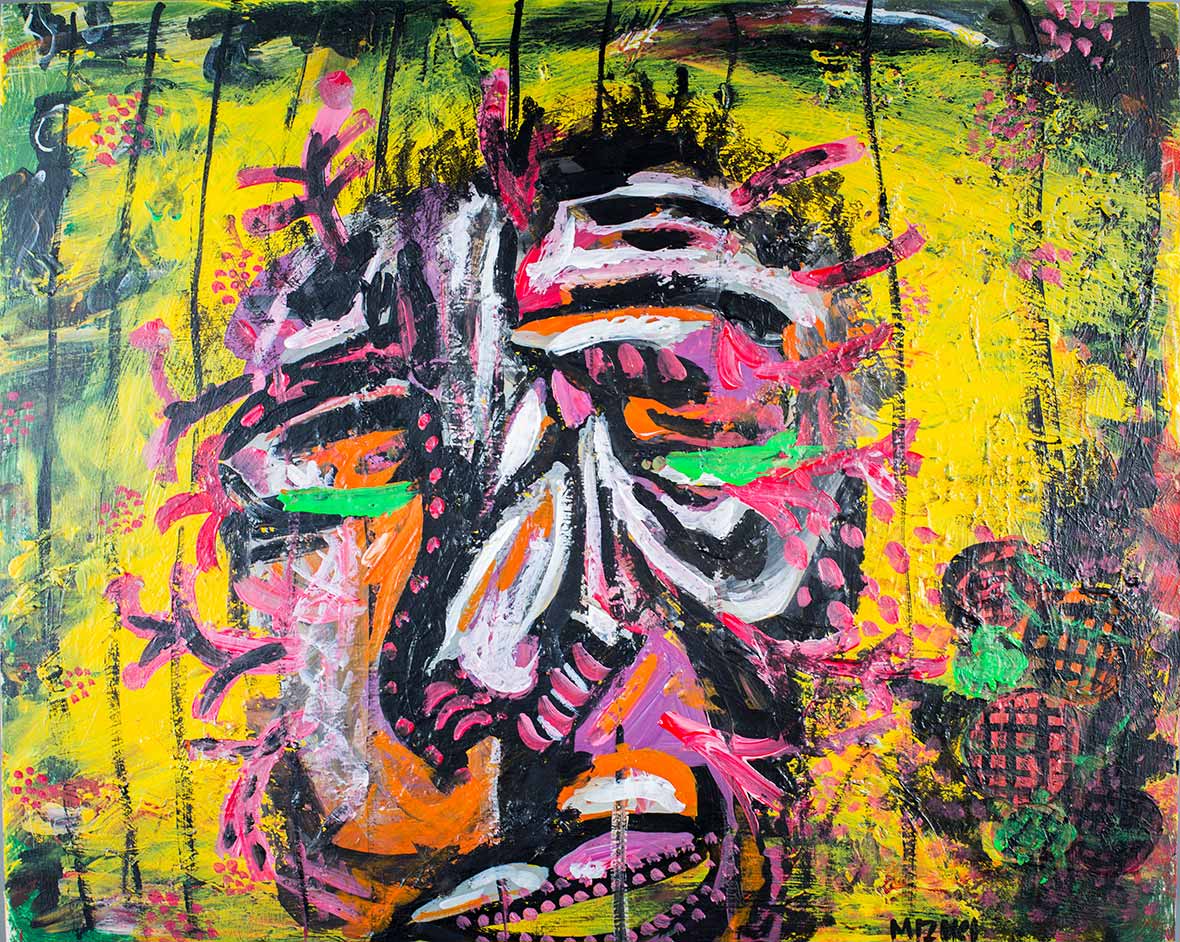
Neocha: How does color play a role in your art? What does color mean to you?
Nishiyama: Selecting the appropriate colors to provoke emotions and amplify messages are constantly on my mind. Themes surrounding my pieces are often quite impassioned, so I tend to naturally grab darker, more vibrant and vivid shades. I am currently experimenting with mediums. I am familiar working with highly pigmented shades, however, I’ve recently begun incorporating gouache, gloss, thickening mediums, as well as glazing to create a variety of looks.
Neocha: 色彩在你的艺术创作中扮演什么角色?色彩对你来说意味着什么?
Nishiyama: 我总是会去思考如何选择合适的色彩来挑动情绪,突显作品想要传达的信息。我的作品主题往往都十分激烈的情感,所以很自然地,我倾向于使用更鲜活生动的暗色调。我目前在尝试用不同的媒介进行创作。我比较擅长用高饱和度的色彩创作,但是最近我也开始使用水粉、光泽涂料、可以增厚质感的媒介,以及透明画法(glazing)来营造同不的效果。
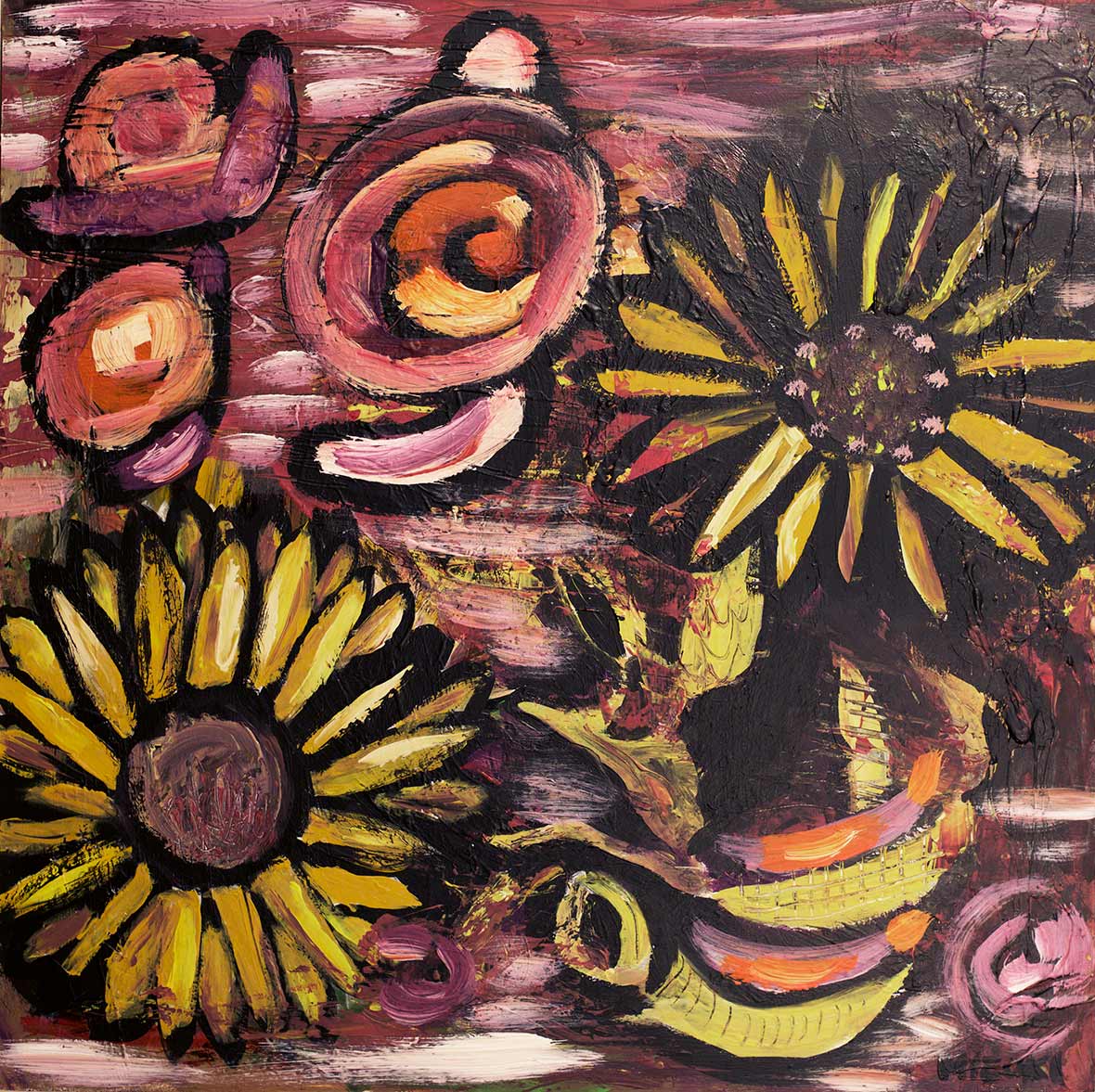
Neocha: As both a painter and a poet, how does your creative process differ across these two mediums?
Nishiyama: Literature and painting go hand-in-hand when it comes to being able to show an accurate representation of what I intend to document. I’m a big fan of confessional poetry. I do not intend to create flawless stanzas nor sculptured phrases. I have always treated both my paintings and my poems as representative milestones in my life. The commonality would be the emotional heaviness I convey through both mediums.
Neocha: 你身兼画家和诗人两个身份,那么你在分别创作这两个媒介时,会有什么不同的创作思路吗?
Nishiyama: 文学和绘画都能准确表达出我想要记录的内容,在这一点上,两者是一样的。我特别喜欢自白派诗歌(Confessional Poetry)。我不打算创作出完美无瑕的诗节,也不想精雕细琢所用的词语。一直以来,我创作的画和诗都是记录我生命的里程碑。两者的共性在于我透过这两种媒介传达的沉重情感。

Neocha: How has studying in New York City influenced your attitude towards art?
Nishiyama: I became more driven once I started attending the Parsons School of Design, due to constantly being surrounded by highly motivated and creative people. Moving to New York City meant there were going to be a lot of new life changes, and that resulted in many conversational pieces. Nonetheless, Hong Kong, Japan, and New York are all creative, visionary cities to develop one’s art. But I do favor New York simply because it is a new chapter in my life, and there is yet so much more for me to learn and explore.
Neocha: 在纽约学习的经历让你对艺术的态度产生了什么变化?
Nishiyama: 入读美国帕森斯设计学院( Parsons School of Design)后,我变得更有创作的动力,因为身边的人都充满了创作欲望和创意才华的人。搬到纽约后,在生活上自然会发生很多的变化,也因此创作了很多交谈画(Conversational Piece)。虽然香港、日本和纽约都是充满前卫创意的地方,非常适合发展艺术,但我尤其喜欢纽约。原因很简单,它代表着我人生的新篇章,在这座城市有那么多值得我去学习和探索的东西。
